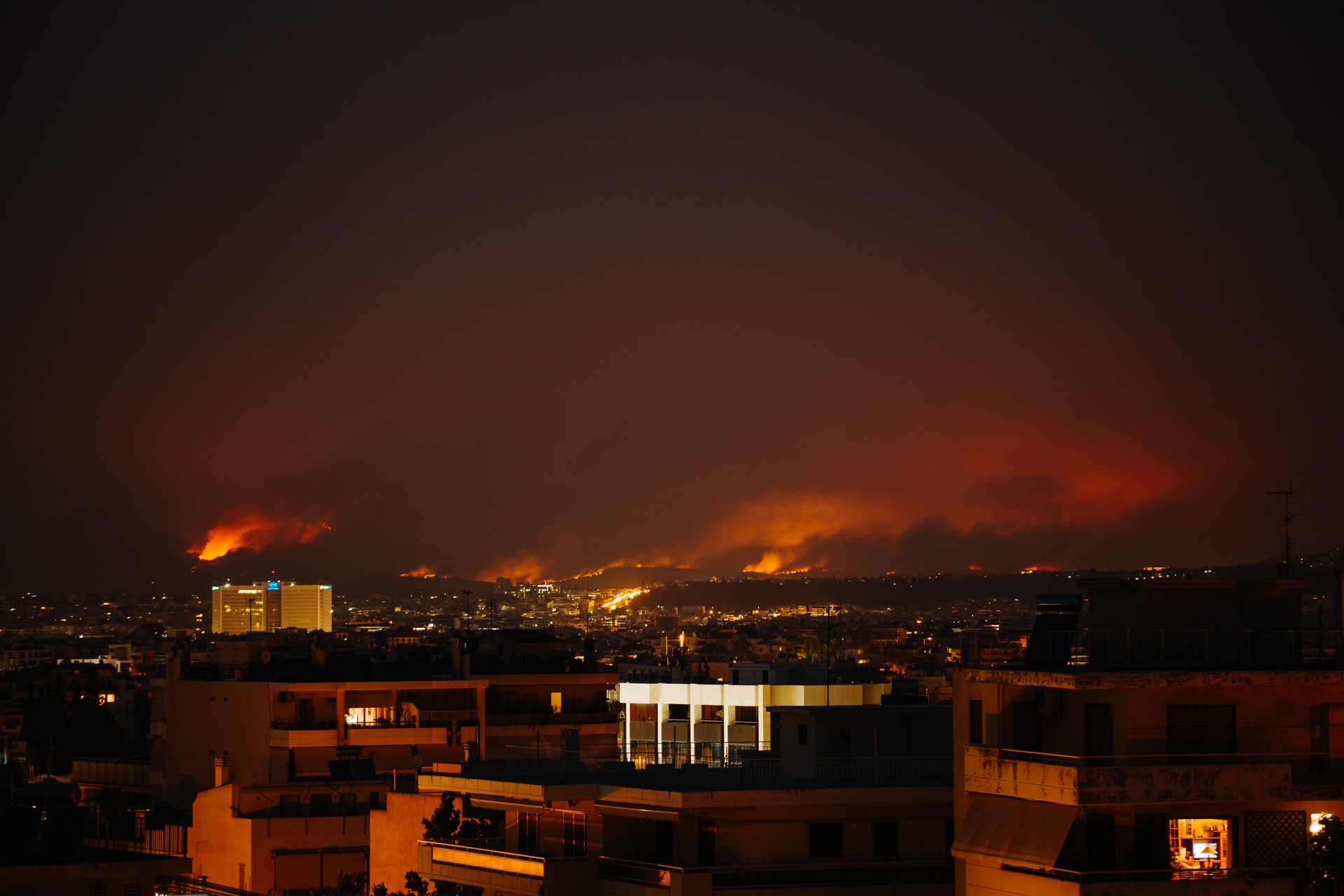We’ve All Seen Footage of a Wildfire…
The video released by residents of Paradise, California, might be some of the most frightening. It’s shot after shot of a town darkened by thick black smoke with walls of fire surrounding it. Residents race to safety while the blaze swallows property after property, and what’s left in its wake is rubble and ash. A community is displaced, properties are destroyed, and a question is raised. Is it possible to rebuild and get back to life before catastrophe?
Their loss has been presented by news teams and documentarians, and it provides us with a glimpse of the worst possible outcome that people and property in high-risk areas face during fire season. But does it present the whole picture?
A wildfire’s footprint is much larger than what can be seen with the naked eye, and when monitoring the livelihood of property and people, it’s important to fully understand its far-reaching effects.
Understanding Wildfires and How They Start
Nature
Wildfires tend to start in one of two ways. The first is a natural fire caused by nature. This could be lightning striking dry areas or a spontaneous biomass burn.
Manmade
The second involves human interference. Sometimes fires are set on purpose, but most often it happens by accident, like a campfire not being put out correctly or the gender reveal party that sparked a blaze near Los Angeles in 2020. In high-risk areas, these fires grow quickly, generating smoke and flames that cannot be controlled.
For Property Owners and Managers…
The threat of an oncoming wildfire is crushing. Can they keep their business running and their people safe? If unprepared the answer is grim, but by planning ahead and considering how far-reaching the impact of a wildfire could be, procedures can be put in place to mitigate loss and protect businesses from complete collapse.
Risk Assessment for your Property
Understanding the two ways a fire can start will help managers develop a thorough risk assessment.
So how can risk be calculated?
The risk of wildfires is measured by Fire Hazard Severity Zone ratings. This detailed rating system takes landscape, fire history, local plants, and other factors into account to determine fire likelihood and behavior. Area risks are then classified as either moderate, high, or extreme.
Zone classifications are important to recognize, but they don’t account for the human element. It’s important to remain cognizant and have a plan, regardless of the level of risk.
What is it about wildfires that make their footprint so big?
Wildfires affect properties far beyond the flames. Smoke generated from wildfires is toxic and carries airborne particles that can be harmful if inhaled. Hazardous dust and soot find their way into HVAC systems and can circulate throughout the building. Facilities that hold high-risk patients need to know how to handle these situations ahead of time. This puts those locations on high alert. Some of these properties are…
- Hospitals
- Urgent Care Facilities
- Senior Living Facilities
- Dental Offices
- And more
Other commercial properties face the same threat, but along with the smoke comes that “campfire smell” that can get into fabrics like drapes, clothing, and carpeting. Poor air quality and the never-ending odor of a wildfire can quickly become a major deterrent to guests, creating the potential for facilities to lose the revenue they bring. Commercial properties at risk include…
- Hotels
- Resorts
- Multi-family Apartment Housing
- And more
Wildfires are far-reaching catastrophic events, and they’re happening with greater regularity every year. If businesses in high-risk areas hope to mitigate loss and protect their properties, they have an obligation to plan ahead for disaster. It’s not a matter of if, it’s a matter of when.
Effectively thinking ahead with a disaster preparedness plan
Disaster preparedness plans are designed to help property owners and managers protect the livelihoods of employees and occupants while mitigating loss and protecting facility assets. Understanding that wildfires can happen without warning justifies the need for a plan, and its strength is dependent on the work put in by property owners, managers, and any outside sources hired to assist in this process.
Gathering Information
It’s important for facilities to collect essential information regarding the property; photographs and blueprints of the building, asset documentation, and information on key locations, like shut-off valves and HVAC controls. Hiring a restoration team will help with this process, but good teams ask for as much of this information upfront as possible. This will allow them to work without disrupting the day-to-day operations in a facility.
Connecting With Insurance
Having an understanding of what’s covered in case of fire means getting in touch with insurance. The broker assigned to the facility can provide information on the cost of coverage and what this coverage includes. When it comes to planning for disaster recovery, getting insurance in touch with the restoration partner is crucial.
Certain restoration teams like First Onsite believe that restoration is an end-to-end solution to the claims process. Finding a partner that will actively be there from the beginning of the planning process will encourage strong communication and support a smooth recovery when the unthinkable occurs.
Wildfires Will Never Be a Thing of The Past
For properties in high-risk areas, the threat of wildfire damage remains. By taking some time to better understand wildfires, how they work, and the impact they could have on all properties, businesses can effectively plan for and survive the unthinkable.
